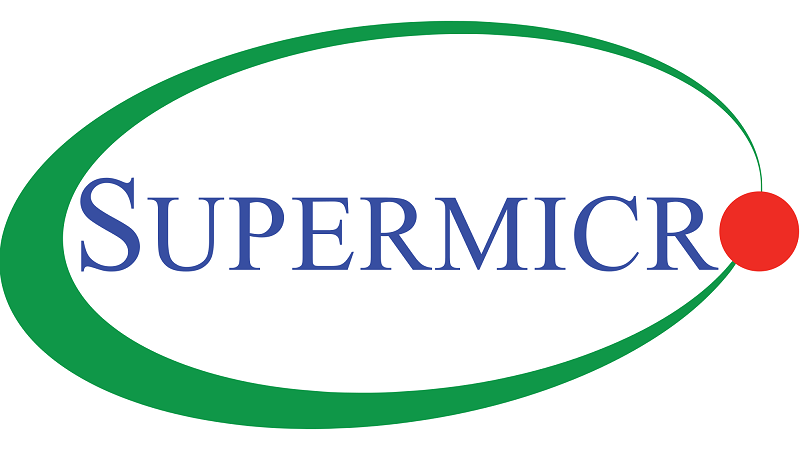超微电脑 (SMCI.US) 2025财年第四季度业绩电话会
文章语言:
简
繁
EN
Share
Minutes
原文
会议摘要
Supermicro Computer Inc. anticipates significant revenue growth and improved profit margins through the introduction of Data Center Building Block Solutions (DCBBS), designed to streamline AI data center deployment and reduce costs. The company is expanding into higher-margin markets, such as enterprise IoT and telco, to diversify revenue streams. Despite challenges like tariffs and capital constraints, Supermicro forecasts at least $33 billion in revenue for fiscal year 2026, with a focus on enhancing the margin profile for Gen AI factories and achieving stable gross margins through better inventory management. The company aims to provide a one-stop-shop for customers building AI factories, positioning itself competitively in pricing and allocation for upcoming product launches.
会议速览
This phone conference mainly discussed the fourth quarter and full year financial performance of Supermicro Computer Inc. for fiscal year 2025. Company founder, chairman, and CEO Charles Liang, CFO David Wiegand, and other executives attended the meeting. The meeting covered the company's financial results, business outlook, explanation of non-GAAP financial measures, as well as expectations and risks for future business. Additionally, investors were reminded to pay attention to risks and uncertainties related to forward-looking statements. The meeting concluded with a question and answer session for analysts.
In the fiscal year 2025, the company achieved a 47% revenue growth, reaching $22 billion, despite facing short-term challenges. By optimizing AI and green computing solutions, the company strengthened its market competitiveness. In the fiscal year 2026, the company plans to expand its modular data center solutions and deepen its presence in the enterprise IoT and edge computing markets. It is expected to generate at least $73 billion in revenue for the year, demonstrating strong growth potential and shareholder value.
The company reported its fourth quarter and full-year financial performance, with Q4 revenue totaling $5.8 billion, an 8% year-on-year increase and a 25% quarter-on-quarter increase, mainly driven by high demand for the new generation AI platform. Annual revenue reached $22 billion, a 47% year-on-year increase. Revenue from enterprise channels and OEM home appliances and big data centers increased by 7% and 2% respectively, with the emerging 5G telecommunications edge IoT segment accounting for 1% of Q4 revenue. The non-GAAP gross margin was 9.6%, operating expenses increased, and the non-GAAP operating profit margin was 5.3%. Net sales for the next quarter are expected to be between $6 billion to $7 billion, with full-year net sales expected to be at least $33 billion.
The growth expectations for chip sales in the 2026 fiscal year were discussed, pointing out that last year's 47% growth was due to supply restrictions of the 10K chip. This year, it is expected that the growth will be even better. It was mentioned that the availability of resources from suppliers like NVIDIA is a key bottleneck, as well as the ability of the new product TC PPS to accelerate data center construction. At the same time, some customers are waiting for new technologies such as GB 300, while technologies like AP 300 GP 3 are ready and waiting for NVIDIA's support.
The conversation revolves around how to balance revenue growth and profit expansion in the AI server market, emphasizing rapid market expansion and profit increase through providing comprehensive data center solutions. At the same time, opportunities for cooperation with sovereign countries, especially in Europe, the Middle East, and Asia, were discussed, leveraging the company's expertise in AI infrastructure design and construction. It is expected that such cooperation will bring significant potential for revenue and profit margin growth.
The conversation discussed the industry situation that NVIDIA has experienced in the first six months, including the extension of customer purchase cycles and market dynamic changes due to different product decisions. NVIDIA emphasized its product diversification and support for various data centers, particularly its advantage in serving medium and small AI infrastructure. In addition, the strong and continuous demand from large data center customers was mentioned, with NVIDIA fully prepared to support these customers' needs. It was also mentioned that NVIDIA's cash flow has been strengthened, indicating its ability to support more large data centers.
Discussed sales cycle, customer interest and expected revenue timeline of modular solutions for data center, as well as the potential uplift in gross margin from enterprise and edge computing opportunities, with the goal of returning to the long-term gross margin target of 14%-17%.
In the conversation, the company discussed the contribution of four major clients (with code names A, B, C, D) to its fiscal year revenue, with three clients accounting for 11% each and another accounting for 21%. Additionally, the company expressed optimism towards the Data Center Building Block Solution (DC BBS) and the Fast Market Entry strategy, believing it to be the best way to increase gross profit margin, especially through improving Time Critical Path Performance (TCPP) to shorten the time from construction to online for customers, thereby attracting more customer interest.
The discussion mainly revolves around the driving factors of the company's expected revenue growth in the September quarter, particularly the adoption of new platform technologies and their impact on operating profit margins. At the same time, the business model of the data center modular construction solution is also explored, whether this solution will be provided as a standalone service or bundled in the Gen AI factory to optimize profit margins. Additionally, the comprehensiveness of this solution is mentioned, including computing power, cooling systems, etc., as well as its positive impact on customers' quick launch and delivery times. It is expected that the share of this solution in the business will significantly increase in the future.
Discussed the performance of gross margin rate this quarter, pointing out that inventory reserves have affected the gross margin rate, but it is expected to stabilize in the future. Mentioned that optimizing PC PPS and service functions will help reduce product backlog and price reductions, as well as improve gross margin rate. At the same time, emphasized the need to keep an eye on the tariff environment, stating that reactions will be made based on the latest developments, but the specific impact cannot be predicted at the moment.
Discussed recent export license for NVIDIA and AMD regarding potential deployment support, as well as the expected revenue contribution of data center building blocks solutions to reach 20%-30% in the September quarter. Mentioned will not sell a large amount of related products and confirmed that the revenue contribution of data center solutions will gradually increase.
Discussed the profit margin advantage of data center solutions, as well as pricing and distribution strategies with competitors when launching the B300 product, emphasizing close collaboration with suppliers to ensure rapid product promotion.
In the discussion, the company mentioned its revenue guidance target of 33 billion for the 2026 fiscal year, which includes growth expectations in the European and Middle Eastern markets, with a particular emphasis on the positive impact of the Middle Eastern market on the company's business. In addition, detailed discussions were held on market strategies and shipment schedules for data center components such as NVMe, CPU, CDU, and BB, aiming to provide a one-stop solution to optimize efficiency, quality, and cost, meeting the needs of customers building data centers or AI factories.
要点回答
Q:What are the financial results and strategic direction highlighted in the speech?
A:The financial results for the fourth quarter and full year fiscal 2025 show a 47% year-on-year revenue growth to $22 billion, driven by continued strong demand for AI and green computing solutions. The company grew its number of large-scale customers and remains focused on strategic priorities such as optimizing solutions and capturing market share. The company's strategic direction includes capitalizing on AI platforms and infrastructure, with a comprehensive portfolio and leadership in AI technologies. Additionally, the company is focused on the enterprise IoT market and has introduced advanced server and storage systems for edge computing workloads.
Q:What specific challenges impacted the company's performance in the recent quarter?
A:In the recent quarter, challenges that impacted the company's performance included a capital constraint that limited the ability to rapidly scale production and specification changes from a major new customer leading to revenue recognition issues. However, these challenges were addressed as the fiscal year 2024 10K was filed, and large customer orders allowed for revenue recognition in the September and December quarters following close collaboration to align with the customer's update feature requirements.
Q:How does the company's new data center building block solution, pccv, benefit customers?
A:The pccv solution allows customers to quickly adapt to evolving market demands, especially in response to complex AI product cycles. It enables faster customization, streamlined production, and reduced time to delivery and time to online. The solution optimizes quality, efficiency, and ease of maintenance, allowing customers to build a liquid-cooled AI data center in 18 months instead of 2-3 years when converting an existing data center or warehouse to a high-density, direct, deep-cooling data center.
Q:What are the environmental benefits of the company's data center solutions?
A:The company's data center solutions, including the pccv, help reduce power and water consumption by up to 40%, operate at a low noise level of around 50 dB, and deliver superior performance with a reduced total cost of ownership and a smaller environmental impact. The solutions include advanced second-generation direct recording in TLC 2 systems that further reduce power and water consumption.
Q:How does the company's pccv solution meet the demand for a comprehensive 1-stop shop?
A:The pccv solution meets the demand for a comprehensive 1-stop shop by providing a range of services including software-defined infrastructure, system management, AI workflow optimization, networking deployment, and various levels of services. This allows cloud service providers to reduce capital and operating expenses and delivers greater value to both AI-focused and traditional IT data centers.
Q:What is the company's long-term strategy and recent focus regarding profit margins and market expansion?
A:The company's long-term strategy involves a shift towards higher-margin revenue streams and enhancing customer value through advanced system and storage solutions. It is strategically focusing on the enterprise IoT market, which is expected to improve growth and net margins over time. The company has also started investing in solutions for enterprise customers, with a continued focus on hyper cloud AI applications and edge computing workloads. Additionally, Super has launched an enhanced Enterprise Service program to deliver comprehensive global support for high-density, high-performance data centers.
Q:What are the key components of the speaker's IoT portfolio and strategic partnerships?
A:The speaker's IoT portfolio includes embedded systems and services and is gaining momentum across various sectors such as manufacturing, hair care, smart cities, and AIoT applications. They have announced strategic partnerships to accelerate innovation in AI and IOT telecom solutions, with a focus on expanding into higher-margin segments to diversify revenue streams and drive long-term profitability.
Q:What is the expected revenue range for the upcoming Q1 fiscal year 2026?
A:The expected revenue range for Q1 fiscal year 2026 is between 6 billion and 7 billion dollars, driven by continued momentum across AI, private TCPP software, and services, which are delivering exceptional customer value and strengthening profitability.
Q:How did the Q4 fiscal year 2025 revenues compare to the guidance and year-over-year figures?
A:Q4 fiscal year 2025 revenues were 5.8 billion dollars, up 8% year over year and up 25% quarter over quarter compared to the guidance range of 5.6 to 6 billion dollars. The increase was attributed to strong demand for next-generation air and liquid AI platforms.
Q:What were the revenue breakdowns by segment and product category for Q4 fiscal year 2025?
A:Revenue breakdowns for Q4 fiscal year 2025 included the enterprise channel segment at 2.1 billion dollars (36% of total revenues), the OEM appliance and large data center segment at 3.7 billion dollars (63% of Q4 revenues), and the 5G Telco Edge IoT segment at 1% of Q4 revenues. Additionally, 98% of Q4 revenue came from 20 server and storage systems, with a geographic distribution led by Asia at 42% and the US at 38%.
Q:What was the impact of geographic changes on Q4 fiscal year 2025 revenues?
A:Geographically, Q4 fiscal year 2025 revenues saw a decrease of 30% in the US, an increase of 90% in Asia, an increase of 66% in Europe, and a decrease of 3% in the rest of the world on a year-over-year basis. On a quarter-over-quarter basis, US revenues decreased by 21%, Asia increased by 78%, Europe increased by 196%, and the rest of the world increased by 53%.
Q:How did the company's non GAAP gross margin and operating expenses perform in Q4?
A:The non GAAP gross margin in Q4 was 9.6%, versus 9.7% in Q3 and 11.2% for fiscal year 24. Non GAAP operating expenses increased 11% quarter over quarter and 29% year over year to 239 million. The non GAAP operating margin was 5.3% versus 5% in Q3.
Q:What are the financial expectations for Q1 fiscal year 2026?
A:The financial expectations for Q1 fiscal year 2026 include net sales in the range of 6 billion to 7 billion dollars, GAAP diluted net income per share of 30 cents to 42 cents and non GAAP diluted net income per share of 40 cents to 52 cents. GAAP and non GAAP diluted net income per share are expected to include stock-based compensation expenses of approximately 69 million dollars, net of tax effects of 20 million dollars. Other income and expenses, including interest expense, are expected to be a net expense of approximately 24 million dollars. The company expects CapEx for Q1 to be in the range of 60 to 80 million dollars, and for fiscal year 26, they expect net sales of at least 33 billion dollars.
Q:What was the GAAP and non GAAP diluted EPS for Q4, and what were the key factors affecting it?
A:The GAAP diluted EPS for Q4 was 31 cents compared to guidance of 30 to 40 cents and non GAAP diluted EPS of 41 cents versus guidance of 40 to 50 cents. Factors affecting diluted EPS included lower gross margins and higher operating expenses in the quarter.
Q:How did cash flow from operations and CapEx investments perform in Q4?
A:Cash flow from operations in Q4 was 864 million dollars, compared to 627 million in the previous quarter. For fiscal year 25, cash generated from operations was 1.7 billion dollars versus cash consumed by operations of 2.5 billion dollars in 2024. CapEx and investments for Q4 were 79 million dollars resulting in positive free cash flow of 841 million dollars for the quarter.
Q:What are the constraints the company is facing that are affecting their growth?
A:The company is facing constraints due to a wait-and-see approach with availability and resource constraints for their vendor like Nvidia. However, they believe availability will be much better than the previous year and expect to grow better than the 47% growth experienced last year.
Q:Is there a relationship between customers waiting for GB 300 and the company's revenue growth?
A:Yes, customers are always waiting for upcoming technology like GB 300. However, the company has products like AP 300 and GP 3 ready to go, pending partner Nvidia's support.
Q:What is the company's management strategy for competing in the AI server market?
A:The company's management strategy for competing in the AI server market involves focusing on revenue growth and gaining market share while also focusing on margin expansion. They aim to achieve this by providing a total solution like the DCPP data center block solution, which helps customers build data centers quicker and more reliably, allowing for growth in revenue, market share, and profitability.
Q:What are the company's thoughts on the opportunity with sovereigns, specifically with the MOU announced with DataWall?
A:The company sees a significant opportunity with sovereigns, as many countries need to build AI and appreciate their PC PBS data center infrastructure solution. The MOU with DataWall is part of this strategy. They expect a very good demand and big room to grow in this area.
Q:Are customer decision-making cycles normalized and what is the impact on the company's organic demand backdrop?
A:The company suggests that customer decision-making cycles are not yet normalized and that there may still be some elongation. This affects the company's understanding of the organic demand backdrop as they wait for normalization in these cycles.
Q:Can you provide details on the types of customers that are expanding to large scale data centers?
A:The company indicates that most large scale AI Cloud Service Providers (CSPs) continue to have a strong demand for large scale data centers. This is supported by their strong cash flow, which enables them to prepare for and support additional large scale data centers.
Q:What are the characteristics of the data center building block solutions and when are they expected to start generating material revenue?
A:The data center building block solutions include various products such as AI computing power, mixed cooling support from liquid to air, power supply solutions, and water towers for liquid cooling. The company has products ready for shipping, with the initial entries into the power sharing scale in the September quarter, followed by higher volume production in December and continued growth in the following quarters. Material revenue from these solutions is expected to start in the September quarter.
Q:Has there been any interest from larger data center customers in the data center building block solutions?
A:While the transcript does not explicitly state whether larger data center customers have shown interest, the context suggests that the solutions are geared towards meeting the needs of such customers.
Q:What is the expected impact of data center building block solutions on customers and the company's profitability?
A:The data center building block solutions are expected to help customers build AI factory infrastructure much quicker, more energy-efficiently, and with cost savings. The company is very excited about their tcpp solution and believes it will contribute positively to profitability.
Q:How do the company's new investments, including the data center building block solutions, align with their long-term gross margin targets?
A:The company acknowledges that enterprise and IoT solutions, along with the data center building block solutions, have the potential to offer much higher margins compared to traditional data centers. While the long-term gross margin target remains at 15%, the company does not specify how quickly they will return to their traditional margins of 16% to 17%. However, they express optimism about achieving these targets in the future.
Q:How should gross margins for the full year be anticipated based on the provided guidance?
A:The company is very optimistic about the data center building block solutions and their quick time to market. They believe these factors, along with the ramp in the 355x and GB 300 products expected in the first quarter, will be key to improving margins. However, the transcript does not provide a clear indication of the full-year gross margins based on the provided guidance alone.
Q:What are the expected drivers for the projected revenue uptick in the September quarter?
A:The projected revenue uptick in the September quarter is driven by customers building out deployments with products such as the 355x and GB 300, which are expected to ramp in the first quarter. These deployments are anticipated to include more customers in Europe, the Middle East, and Asia.
Q:Why is the company not expecting any operating margin leverage despite significant revenue growth?
A:There is always a ramp period when transitioning to new platform technologies which results in a production learning curve, leading to some margin compression. This transition is responsible for the lack of operating margin leverage despite the projected revenue growth.
Q:How are the data center building block solutions positioned in relation to the company's AI factory?
A:The company's data center building block solutions are positioned as a key part of their AI factory, with the potential to drive a better margin profile. They are described as a disc service that is integral to the AI factory, suggesting they are designed to enhance the profitability of the overall AI factory offering.
Q:What are the characteristics of the AI solutions mentioned in the speech?
A:The AI solutions mentioned are supported at scale, designed for easy deployment and integration, and include computing power, deep cooling, and battery systems among other components. They are pre-defined and validated so that when shipped to customers, they are ready for easy assembly.
Q:Why is the time to delivery and time to online critical for the company?
A:The time to delivery and time to online are critical for the company because they affect customer satisfaction as customers have clients waiting for their solutions to go online.
Q:What percentage of deal value is Das expected to represent in the September quarter?
A:It is hoped that Das, which refers to the data center building block solutions, will represent more than 30% of the deal value in the September quarter, as the company aims for a growing presence in providing total data center solutions.
Q:What factors influenced the gross margins in the last quarter, and what are expectations for future gross margins?
A:In the last quarter, gross margins were as expected; however, the company believes that this will not be the case going forward and anticipates a stabilization in gross margins, particularly with the PC PPS and service functions contributing to a more globalized operation which should improve inventory management and reduce product write-downs.
Q:How is the company positioned to support the deployments related to the export licenses for Nvidia and AMD?
A:The company is not anticipating selling the products related to the export licenses for Nvidia and AMD at high volumes; high volume sales will start with the 9th generation for them.
Q:What is the expected growth margin profile for the data center building block solutions and what is the incremental gross profit from such sales?
A:The growth margin profile for the data center building block solutions is much better than for commodity products, offering significant value to customers and better profit margins. The company believes that the solutions, with their modular design, will offer better profit margins compared to the corporate average.
Q:What is the pricing and allocation strategy for the B300 launch?
A:The company works closely with its vendor for the B300 launch and expects to be a strong contender once the product is available. The company is eager to promote the product quickly upon availability.
Q:What is the expected revenue contribution from the data center in the fiscal year 2026 guidance?
A:The company does not specifically comment on revenue from single customers, but they have a growing customer base in Europe and the Middle East and are excited about the prospect of growing their business in these regions.
Q:What is the product roadmap for the data center building block solutions?
A:The company has started shipping products such as Airsidecar and is in the process of shipping CP, CDU, and will soon start shipping BB. Power supplies are ready for shipping this quarter. Eventually, the data center building block solutions will be a significant product line, aimed at offering a one-stop shop for customers to build their AI factories, optimizing efficiency, quality, and cost.






